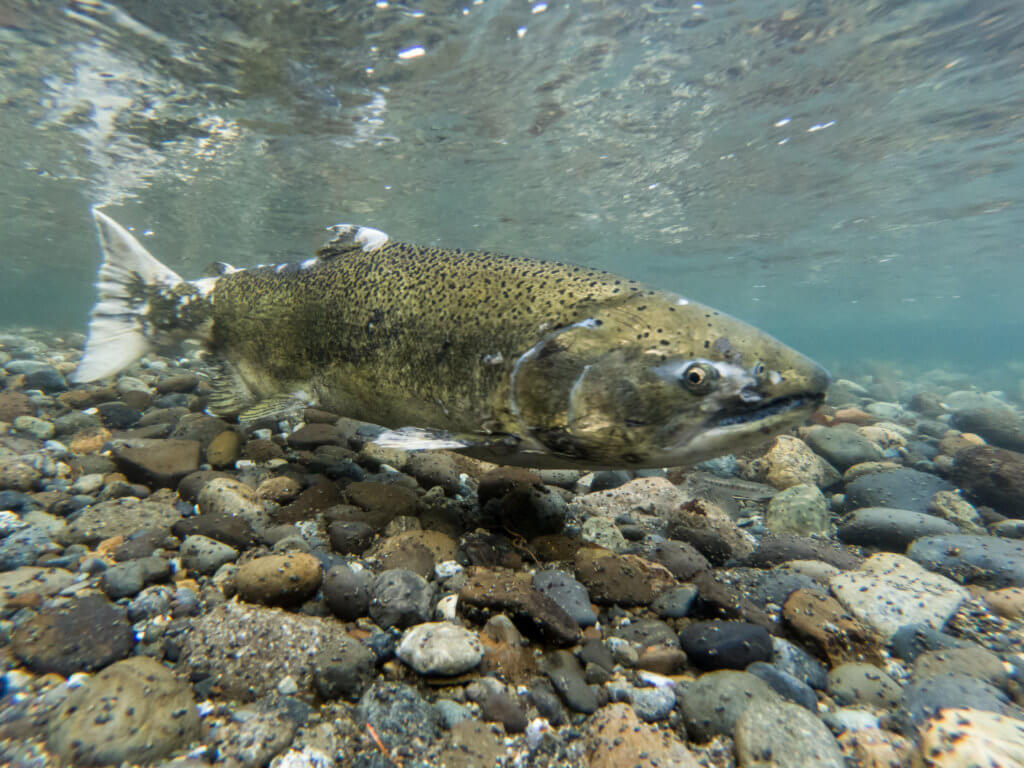By Brian Posewitz | June 13, 2020 | Register Guard
The U.S. Army Corps of Engineers owns 13 reservoirs on major tributaries to the Willamette River, including well-known reservoirs such as Fern Ridge on the Long Tom, Lookout Point on the Middle Fork of the Willamette, Cougar on the South Fork of the McKenzie and Detroit on the North Fork of the Santiam. The corps is near the end of a process to decide who gets how much water from those reservoirs. Unfortunately, the corps is asking Congress to approve a plan that would be a bad deal for fish.
The reservoirs can store up to 1.6 million acre feet of water — enough to cover 1.6 million acres of land with water one foot deep — for release in the spring and summer. Currently, all but about five percent of that water — which is under contract for irrigation — gets used to meet minimum flow needs, as determined in a 2008 “biological opinion” by the National Marine Fisheries Service, for winter steelhead and spring Chinook salmon. Both species are listed as “threatened” under the federal Endangered Species Act (ESA) and are in perilous decline. Meeting the minimum flows helps the fish migrate to and from the ocean and helps keep the water cool enough for them to survive all the human impacts that have warmed the water and changed the shape of the rivers over the years.
The corps’ own modeling says it would take two million acre feet of stored water each year — all of the water in the reservoirs and then some — to always meet the minimum flow needs of the threatened fish. The corps reservoir plan would give the threatened fish only 1.1 million acre feet (less when the reservoirs don’t fill).
After evaluating alternative plans, including a plan that would allocate all of the water to threatened fish and a plan that would give each category of use less than its total need, the corps proposed a plan that would give irrigators and cities all the water they say they need for the next 50 years (based on exaggerated estimates that assume no improvements in conservation or efficiency), allowing them to dictate when the water gets released and to withdraw it from the rivers. The plan would give threatened fish only what’s left over, and the corps did not even consider the needs of other fish in the basin, such as trout, lamprey and Coho salmon.
As a requirement of its process, the corps asked the Fisheries Service to agree that its reservoir plan would not harm threatened salmon and steelhead in the basin. The Fisheries Service did not agree. Instead, in June 2019 it told the corps its plan would “jeopardize” survival of the threatened fish. The Fisheries Service recommended several changes, including:
One, retain authority to reallocate the water later if future studies show the threatened fish need it, and two, prioritize flows for the fish in low water years.
The corps nevertheless is asking Congress to approve its plan without those changes and without clearly incorporating other changes recommended by the Fisheries Service.
To make things worse, the corps is trying to push its plan through Congress even though the Fisheries Service is in the middle of updating its 2008 biological opinion on the effects of the dams generally, even though the corps is in the middle of preparing its own environmental impact statement on the dams. Those studies are sure to provide important new information that should be incorporated in the reservoir plan, including updated information on what’s best for the threatened fish and how much water is likely to be available after considering more recent flow data and expected effects of climate change.
Oregon’s congressional delegation can and should stop the corps’ bad (and premature) reservoir plan. Rep. Peter DeFazio, whose district includes Corvallis, Eugene and the south coast, is chair of the House committee that must approve the plan. Sen. Jeff Merkley is a member of the relevant Senate committee. The rest of Oregon’s congressional delegation should oppose the plan too. Fish populations in the Willamette Basin are important to the entire state and need to be protected.
Brian Posewitz is a staff attorney at WaterWatch of Oregon. This opinion piece originally appeared in the Eugene Register-Guard on June 13, 2020.

